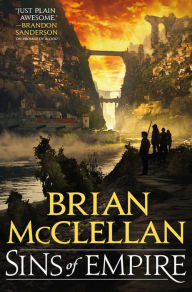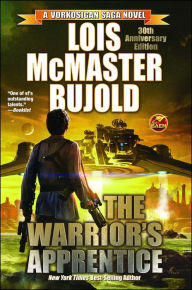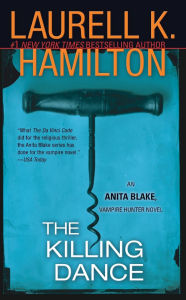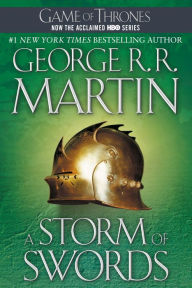How to Know When It’s Okay to Read a Series out of Order
 It may be the most crucial question in science fiction and fantasy that no one is asking: is it ok to read a series out of order?
It may be the most crucial question in science fiction and fantasy that no one is asking: is it ok to read a series out of order?
Etched in Bone (Anne Bishop's Others Series #5)
Etched in Bone (Anne Bishop's Others Series #5)
By Anne Bishop
Hardcover $27.00
Recently, I read—and enjoyed—Etched in Bone by Anne Bishop and Sins of Empire by Brian McClellan, the fifth and fourth books, respectively, in two long-running, popular series.
But here’s the rub: in neither case was I a preexisting fan of the characters and worlds between the covers. In fact, I was reading them with fresh eyes, floundering a bit as I attempted to pick up the narrative midstream.
Etched in Bone was clearly not a good place to start Bishop’s Others books—the fifth book in a series of five, I got the end of the story first. Sins of Empire made a better standalone novel, despite its ties to three earlier Powder Mage stories, as it branches off into a new narrative, with a fresh cast of characters.
The disparity in my dual reading experiences—and, let me reiterate, both books are definitely worth reading, probably even more so for fans, of which I am now one—set me pondering: what demarcates a series whose books must be read in order from one that allows readers to dip in at any point and more or less follow what’s going on?
Recently, I read—and enjoyed—Etched in Bone by Anne Bishop and Sins of Empire by Brian McClellan, the fifth and fourth books, respectively, in two long-running, popular series.
But here’s the rub: in neither case was I a preexisting fan of the characters and worlds between the covers. In fact, I was reading them with fresh eyes, floundering a bit as I attempted to pick up the narrative midstream.
Etched in Bone was clearly not a good place to start Bishop’s Others books—the fifth book in a series of five, I got the end of the story first. Sins of Empire made a better standalone novel, despite its ties to three earlier Powder Mage stories, as it branches off into a new narrative, with a fresh cast of characters.
The disparity in my dual reading experiences—and, let me reiterate, both books are definitely worth reading, probably even more so for fans, of which I am now one—set me pondering: what demarcates a series whose books must be read in order from one that allows readers to dip in at any point and more or less follow what’s going on?
Sins of Empire
Sins of Empire
Hardcover $26.00
First, a confession: I’m one of those weirdos who often knowingly reads a series out of order. If one book looks more interesting than another, I’ll grab that one first. (That’s how I started reading the Laurell K. Hamilton’s Anita Blake novels with book six, The Killing Dance.) I also sometimes skip to the last page of a book before reading it. Yeah, I’m one of those people.
But, even so, there are some series I’d never read out of order. The obvious example is George R.R. Martin’s A Song of Ice and Fire. No one, not even a practiced series deconstructionist like me, should start that whole messy saga anywhere other than with A Game of Thrones.
And then there are series like the Vorkosigan Saga by Lois McMaster Bujold, addictive space operas with ongoing plot elements that could nevertheless be enjoyed on their own, even if you never read another one (though…why wouldn’t you?).
With that in mind, here are four rules to determine when it’s ok to read a series out of order.
First, a confession: I’m one of those weirdos who often knowingly reads a series out of order. If one book looks more interesting than another, I’ll grab that one first. (That’s how I started reading the Laurell K. Hamilton’s Anita Blake novels with book six, The Killing Dance.) I also sometimes skip to the last page of a book before reading it. Yeah, I’m one of those people.
But, even so, there are some series I’d never read out of order. The obvious example is George R.R. Martin’s A Song of Ice and Fire. No one, not even a practiced series deconstructionist like me, should start that whole messy saga anywhere other than with A Game of Thrones.
And then there are series like the Vorkosigan Saga by Lois McMaster Bujold, addictive space operas with ongoing plot elements that could nevertheless be enjoyed on their own, even if you never read another one (though…why wouldn’t you?).
With that in mind, here are four rules to determine when it’s ok to read a series out of order.
The Warrior's Apprentice 30th Anniversary Edition
The Warrior's Apprentice 30th Anniversary Edition
Paperback $15.00
1. When the character arcs are resolved by book’s end
In Sins of Empire, there are three leads, and all set out on emotional journeys that are fully resolved by book’s end.
Meanwhile, ASoIaF readers are still waiting to see what happens via-à-vis Jamie Lannister’s redemption arc, whether the Khaleesi will ever seize her birthright, if Tyrion’s suffering will amount to anything, or if Jon Snow will ever stop flailing about and realize who and what he is.
In Bujold’s The Warrior’s Apprentice, a young man who dreams of being a soldier finds more than he bargained for, and, at the end, his journey has a resolution, despite a fair dozen books that follow.
But Bishop’s Others, series, well, readers have been waiting for four books to see what happens with Simon and Meg, and though their patience is rewarded, it took four other books to get there.
1. When the character arcs are resolved by book’s end
In Sins of Empire, there are three leads, and all set out on emotional journeys that are fully resolved by book’s end.
Meanwhile, ASoIaF readers are still waiting to see what happens via-à-vis Jamie Lannister’s redemption arc, whether the Khaleesi will ever seize her birthright, if Tyrion’s suffering will amount to anything, or if Jon Snow will ever stop flailing about and realize who and what he is.
In Bujold’s The Warrior’s Apprentice, a young man who dreams of being a soldier finds more than he bargained for, and, at the end, his journey has a resolution, despite a fair dozen books that follow.
But Bishop’s Others, series, well, readers have been waiting for four books to see what happens with Simon and Meg, and though their patience is rewarded, it took four other books to get there.
The Killing Dance (Anita Blake Vampire Hunter Series #6)
The Killing Dance (Anita Blake Vampire Hunter Series #6)
In Stock Online
Paperback $9.99
2. The driving plot is resolved, even if character arcs extend into the next book
In the Anita Blake novel I picked up, an assassin was out to kill her. (Well, people are always out to kill her.) That’s the inciting incident, and it’s resolved at the end of the book. Everything in the narrative focused on that driving event.
This is not as huge an indicator of a standalone book as one might think, however. The plot of the con man ready to disrupt human society is resolved in Bishop’s Etched in Bone, but it still reads best as part of a series. Which brings me to point three…
2. The driving plot is resolved, even if character arcs extend into the next book
In the Anita Blake novel I picked up, an assassin was out to kill her. (Well, people are always out to kill her.) That’s the inciting incident, and it’s resolved at the end of the book. Everything in the narrative focused on that driving event.
This is not as huge an indicator of a standalone book as one might think, however. The plot of the con man ready to disrupt human society is resolved in Bishop’s Etched in Bone, but it still reads best as part of a series. Which brings me to point three…
A Storm of Swords (A Song of Ice and Fire #3)
A Storm of Swords (A Song of Ice and Fire #3)
In Stock Online
Paperback $20.00
3. The narrative focuses on one concrete storyline
In Etched in Bone, the focus is diffuse. It’s as much about catching up readers on the day-to-day lives of the characters as it is about the narrative that keeps the pages turning. Those who read the other books first won’t mind a visit with their favorite fictional people, of course, but new readers are going to be left wondering why the story is grinding to a halt to provide information that’s basically irrelevant to the main plot.
This is why Sins of Empire stands alone so well, despite mountains of backstory that was obviously already established in the Powder Mage world. Every scene is focused on what’s going on in this book. If readers of previous books receive information about characters they’ve enjoyed in other books, great. But those characters also have a specific role to play in the narrative of this single story.
I need not point out why a book like A Storm of Swords will be nigh-impenetrable to the layreader, with a plot that begins in media res and jumps all over multiple continents, and leaves you hanging at the end.
The format of a series can also change over time. Anita Blake progressed from a series that could be read as standalone novels to one that grew evermore complicated with each entry, with character arcs especially extending across several books. It’s impossible now to grab the latest Anita Blake book and understand everything going on.
3. The narrative focuses on one concrete storyline
In Etched in Bone, the focus is diffuse. It’s as much about catching up readers on the day-to-day lives of the characters as it is about the narrative that keeps the pages turning. Those who read the other books first won’t mind a visit with their favorite fictional people, of course, but new readers are going to be left wondering why the story is grinding to a halt to provide information that’s basically irrelevant to the main plot.
This is why Sins of Empire stands alone so well, despite mountains of backstory that was obviously already established in the Powder Mage world. Every scene is focused on what’s going on in this book. If readers of previous books receive information about characters they’ve enjoyed in other books, great. But those characters also have a specific role to play in the narrative of this single story.
I need not point out why a book like A Storm of Swords will be nigh-impenetrable to the layreader, with a plot that begins in media res and jumps all over multiple continents, and leaves you hanging at the end.
The format of a series can also change over time. Anita Blake progressed from a series that could be read as standalone novels to one that grew evermore complicated with each entry, with character arcs especially extending across several books. It’s impossible now to grab the latest Anita Blake book and understand everything going on.
From a High Tower (Elemental Masters Series #11)
From a High Tower (Elemental Masters Series #11)
In Stock Online
Paperback $8.99
4. The leads are different from book to book
Romance makes a living with books that focus on a particular setting but shift main characters from book to book. It’s a great way to keep a series fresh and a good way to resolve plot and character arcs in one book, allowing readers to start anywhere.
Some SFF series do this as well. Tamora Pierce specializes in various series featuring different lead characters in one setting, as does Mercedes Lackey. John Scalzi’s Old Man’s War books also swaps leads. To use a classic example, Robert Heinlein’s Future History takes place over decades and centuries, with several different narrators who are all part of one linked story.
Does this mean a series where leads don’t change from book to book can’t be read out of order? Not necessarily. Again, I found it easy originally to start the Anita Blake series with the sixth book, and the Vorkosigan Saga can be read in either in publication order or chronological order (though even that series has jumped protagonists a few times).
In the end, is a series is really any better as connected standalone novels or as one massive story?
It depends on your own personal taste. It’s the difference between sitting down to binge-watch Battlestar Galactica or Babylon 5, or cherry-picking the best episodes of Star Trek.
The lovely part is, you can be any kind of reader you want to be. You can even be both. SFF fans may be pedantic at times, but we always welcome more of our own.
What kind of reader are you?
4. The leads are different from book to book
Romance makes a living with books that focus on a particular setting but shift main characters from book to book. It’s a great way to keep a series fresh and a good way to resolve plot and character arcs in one book, allowing readers to start anywhere.
Some SFF series do this as well. Tamora Pierce specializes in various series featuring different lead characters in one setting, as does Mercedes Lackey. John Scalzi’s Old Man’s War books also swaps leads. To use a classic example, Robert Heinlein’s Future History takes place over decades and centuries, with several different narrators who are all part of one linked story.
Does this mean a series where leads don’t change from book to book can’t be read out of order? Not necessarily. Again, I found it easy originally to start the Anita Blake series with the sixth book, and the Vorkosigan Saga can be read in either in publication order or chronological order (though even that series has jumped protagonists a few times).
In the end, is a series is really any better as connected standalone novels or as one massive story?
It depends on your own personal taste. It’s the difference between sitting down to binge-watch Battlestar Galactica or Babylon 5, or cherry-picking the best episodes of Star Trek.
The lovely part is, you can be any kind of reader you want to be. You can even be both. SFF fans may be pedantic at times, but we always welcome more of our own.
What kind of reader are you?





